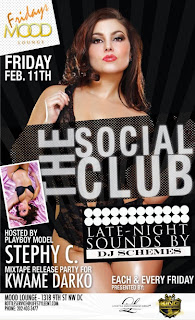According to Baist’s Maps of Naylor Court in 1924, there were two alley stables living on the lot at 1322 9th Street NW. It is now vacant, and languishing as a “blighted D.C. property”. The stables and associated 9th Street NW Victorian homes were razed or collapsed from neglect long ago. How do holes appear in city squares like #0367? Often, it’s a matter of greed. Speculators “sit on a property” – like a stock – in the anticipation that it will eventually make them very rich. When economies tank and ready money suddenly dries up, property values plummet. The forces to continue to hold onto the languishing properties increase. The speculators then double down with renewed tenacity, figuring that they had lost a fortune (a theoretical loss since the full price valuation had never been achieved in the first place) and need to make up for their losses. That's where it gets interesting.
The pressures to do something more than putting up a “for sale sign” mount, so rather than sell or creatively construct, the owners opt to pave, privatize and promote. Now they have cash flow, a diminished tax burden (commercial versus blighted property tax) and can continue to hold what they think will be a winning hand.
In her 1970 album (Ladies of the Canyon) Joni Mitchell (http://jonimitchell.com/) railed against the progressive loss of civility in cities through ruthless “urban planning.” Indeed, rather than saying “you don’t know what you’ve got till it’s gone” she could as easily said: - “you don’t know what you could have done till you can’t.”
“Soon after Harriet Tregoning became D.C. planning director in 2007, the developers of a proposed building for a prime downtown spot at Connecticut Avenue and K Street NW suggested opening a parking lot on their site until construction could begin. She cringed. “I grew up in St. Louis, and I know what a parking lot means, a surface parking lot,” Tregoning said. “If there’s an indicator species for distress, it’s a surface parking lot.” Jonathan O’Connell in the Washington Business Journal discussed the principles of “temporary urbanism” with Ms. Tregoning “as a means to bring dead construction zones and storefronts alive with active, temporary uses O'Connell points out that developers are often lukewarm to the idea of temporary uses as they are concerned that when the time for development does arrive the public will object to displacement of the temporary amenity. When the stopgap for every stalled development is a parking lot it stifles livability. The district has made strides in this regard under Tregoning's tenure but other cities show that much more is possible. But with the recession stalling plans for new construction around the city, she also knew the request was likely to be the first of many. So Tregoning began pushing a new concept — “temporary urbanism” — to bring dead construction zones and storefronts alive with active, temporary uses.”(References: - http://washington.bizjournals.com/washington/stories/2009/11/16/story6.html "WBJ discusses Temporary Urbanism with Harriet Tregoning" and from The Triangle, not just parking lots anymore...
You often hear long time Shaw residents say: - “Surely a paved-over empty lot is better than nothing.” or “You should have seen this place 20 years ago.” Well, think again! Profitable paved parking projects have an evil way of promoting their own permanence. These lots leave nasty dead zones in the city. Parking lots are nationally recognized by urban planners as properties that create opportunities for crime to flourish. They neither improve nor inspire a residential neighborhood. They only contribute to the feelings of neglect, danger and decay. "Obviously, nobody cares around here, so anything goes."
(Naylor Ct. parking lot circa 1989 - photo courtesy of Roger Theil )
By comparing these two maps (Baist’s 1924 and 1989) you will see “holes” in the block density appearing like the lost teeth of urban decay. The paved-over vacant lots represent lost opportunities to increase housing density in downtown D.C. by constructing something creative and exciting for people. Washington is rapidly growing up in terms of thinking about urban planning. It’s actually quietly becoming quite a hip and vibrant town for young people. The time to think of alleys as useful for only trash and services (like parking lots) is finished in the enlightened circles of national discussion about alleys.
Harriet Tregoning is right to push “temporary urbanism” as a way to temporarily use seemingly useless spaces. If you can't swim somewhere positive, at least tread water for a little while. Don't drown opportunities under a sea of asphalt so that they have a difficult time ever recovering.
The neighborhood will aggressively block creating a parking lot on this vacant land at 1322 9th Street NW. It’s one thing to create something from nothing but why on earth should the community accept creating nothing from something! It shouldn’t and won't.










































